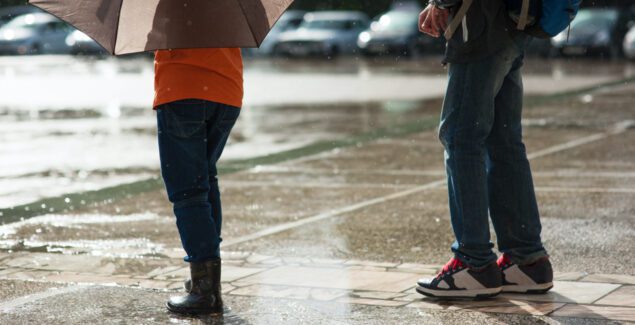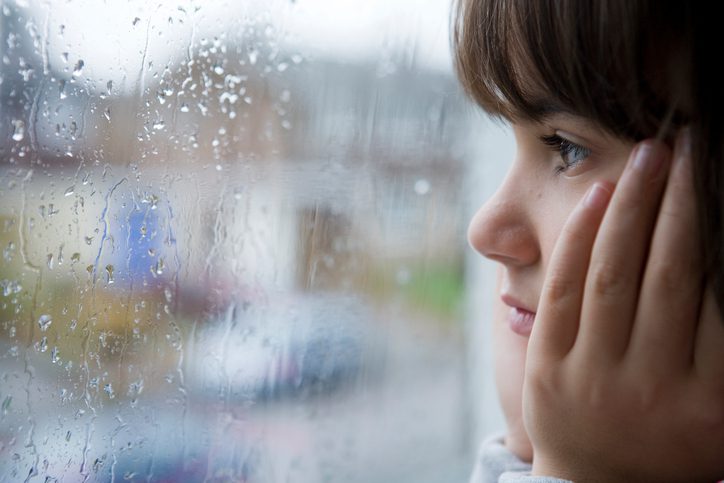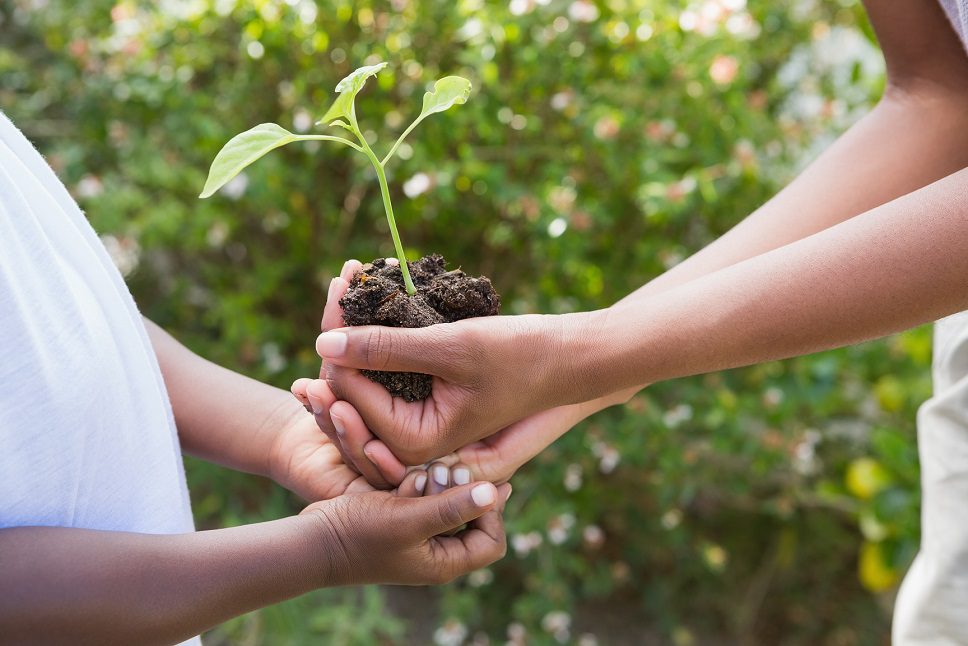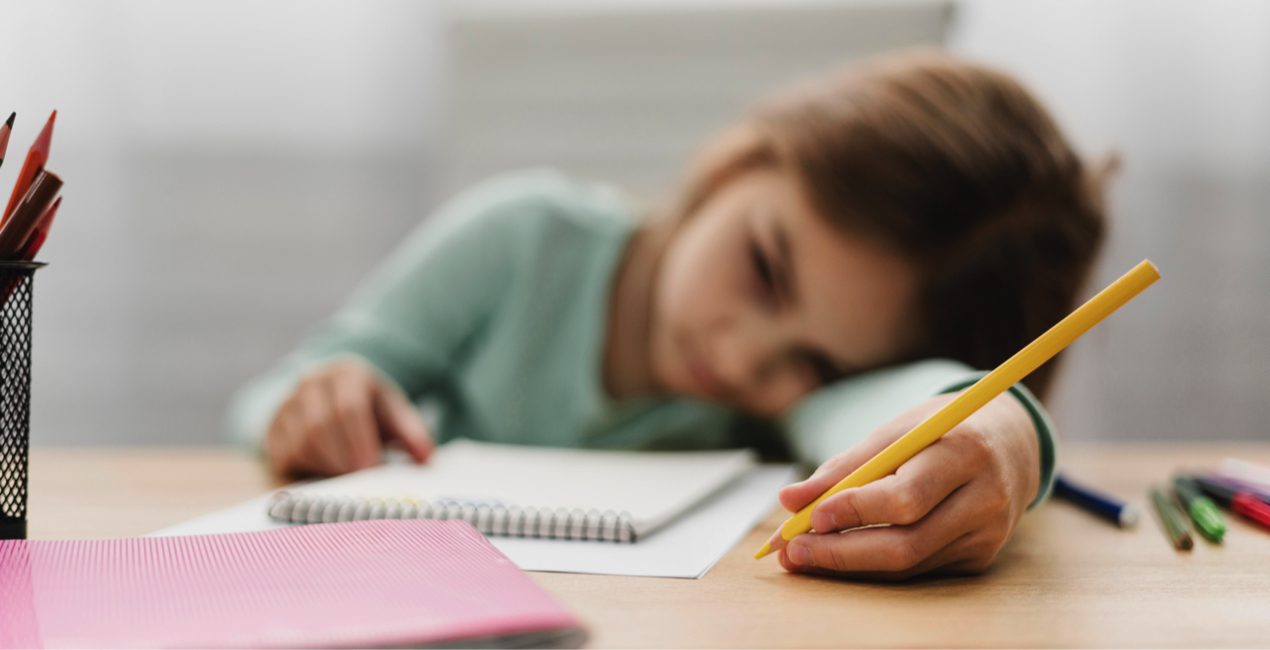Storm Anxiety: 11 Tips to Help Your Child Cope

Posted in: Hot Topics, Parenting Concerns
Topics: Hot Topics, Stress
Anxiety is a normal and protective way we humans have evolved to protect ourselves. But with the increasing number and severity of storms, it may feel as if our anxiety – and that of our children – is being fueled more than usual. Storm anxiety is on the rise.
In threatening situations, our brains release a string of responses (the fight or flight response) that result in extreme vigilance, rapid heart rate, hyperventilation, sweating, trembling and intense fear – all geared to prepare us for danger. This is the foundation for appropriate and adaptive anxiety. But when this kind of “danger” response happens enough to interfere with a child, teen, or young adult’s social, academic, or recreational functioning, we call it a disorder – and in this case a phobia. When a person has a phobia, the fear is quite intense, there are usually panic attacks in anticipation of the storm, and the fear is persistent, not simply when a storm occurs. Or in response to a storm, a child may develop post-traumatic stress disorder (PTSD).
Most kids, teens, and young adults have some form of storm anxiety. In most cases, it does not progress to a phobia.
The Impact of Increasing Extreme Events
It appears that storm anxiety, fears of other natural disasters like droughts and floods, and fears about the future of our planet are increasing significantly. A recent study of 10,000 young people ages 16-25 from 10 countries around the world found that:
- more than 45% reported that their feelings about climate change negatively affected their daily life and functioning;
- 75% reported they thought the future is frightening;
- 85% said they felt people have failed to take care of the climate. Specific to governmental responses, a majority believed the government was not doing enough to avoid climate catastrophe and was lying about the effectiveness of any actions being taken.
The number of weather-related disasters has increased 5 fold over the last 50 years, according to the World Meteorological Association. Though the rates of phobias in young people is 9-12% and this is reduced to 2-3% by adulthood (that is the good news), a survey on “severe-weather phobia” found that around 45% of people taking the survey had moderate anxiety about storms, and 85% had some degree of worry.
While many studies do not look at whether storm anxiety is increasing, climate anxiety certainly is, and storms are part of this picture. I think we can assume that fears of storms (e.g., hurricanes, tornadoes) are increasing. The news reports that this season is likely to have a greater number and intensity of storms, and more and more meteorologists are referencing climate change in their reporting. This and the memories of previous severe storms, such as Katrina, Maria, Harvey among others is alive with continued images on digital media.
Tips to Help Young People Cope With Storm Anxiety
All kids want to know:
- Am I going to be safe?
- Are you the people caring for me going to be safe?
- How will this affect my life?
Here are some tips for young people of all ages.
- Take Care of Yourself First. Anxiety is contagious and your kids will pick up on it. It can also significantly affect your own life. Much like the flight attendant says before takeoff, if the oxygen drops, put the mask on yourself first, then help the person next to you. All the research shows that helping kids requires calmness and control of anxiety. Think about ways to control your own emotions: meditation, prayer, playing music, getting good sleep and exercise, journaling. Many of these could be family activities. Use social supports: Don’t worry alone – connect with your spouse, partner, parents, siblings, or community members to feel more connected and get advice.
- Tell Them in Advance That a Storm is Coming. Get the best information you can and let your child know about the upcoming weather event. Remember to keep your conversation at a level based on developmental age of your child.
- Make a Plan. Once you have more information about the anticipated storm, involve your kids and the whole family in making a severe weather plan. This is supportive and helps the kids feel they are doing something with you. In addition to emergency preparedness, you might think of distractions and activities that would be fun and engaging for everyone at home, or creative ways to keep routines consistent.
- Offer Reassurance. All kids want to be reassured they will be safe. You should remind them that we have been through other storms and have come out OK. Kids and adults alike love narratives, especially how we all got through hard times. Recall other difficult times – when the tree fell on the roof, or when the basement got flooded, or stories they heard from their grandparents. The bottom line is: “We can manage this – together.”
- Let Them Ask Questions. Remember that you may need to answer questions frequently. Let them ask, so you know what’s on their mind. You can only provide reassurance if you know what they are worried about. Listen to and validate their concerns and feelings.
- Have Frequent Conversations. In addition to them asking you questions, ask your own. This is not going to be settled prior to a storm, during, or afterwards in short order. So, prepare to have many conversations in between the cracks – cooking, driving, etc. Use open ended questions:
-
- What are you worried about?
- Can you tell me about your concerns?
- How are you feeling?
- Keep media to a MINIMUM. This is particularly important for younger children. With media images of past storms, they can get confused about whether storms from the past are happening now, as these images are often repeated. It is the same for breaking news footage of devastation during a current storm, playing over and over again on the TV.
- Encourage Peer Support and Adult Supervision. Kids, especially teens and young adults with storm anxiety, often want to talk with friends about their concerns. Peer support is very helpful in managing anxiety and is best done under supervision of a calm adult, who may help to provide guidance. Then consider which adult is best suited for this role: this might be you or another parent, uncle or aunt, a valued teacher, coach, community leader, or member of your spiritual community.
- Use Self-Care to Help Control Anxiety. Just like adults, kids should use self-care to help keep their emotions under control. The measures are no different than yours – meditation, yoga, listening to music or sharing playlists, exercise, getting good sleep, eating well. In addition, the Clay Center has videos on Self-Care for Middle School, High School, and College-age young people that may be helpful to them in getting started.
- Make a Contribution: Our brains are wired such that we get more pleasure from giving rather than receiving. Oxytocin (the neurochemical that enhances attachment) is released through acts of kindness towards others. We can help offset storm anxiety by contributing near or far when storms strike. This means providing food, shelter, donations, a random act of kindness – all of this helps offset storm anxiety for kids as well as adults, in addition to supporting others in need.
A Word on Reducing Climate Anxiety
Given the increasing numbers and severity of storms and worries about the future, it is especially evident that families that are underserved, marginalized, homeless, low socio-economic status, and people of color, are likely to be increasingly at risk a wide range of problems.
For our kids to feel better about climate change consider the following activities:
- Learn/Teach More About It in School. They thrive knowing, even the grim facts, about what to expect on the current path, and what measures can make a difference.
- Join a National or International Organization. Getting involved with an organization is a great way to participate in and learn more about global action, such as lobbying, commenting on policy, etc.
- Do Small Things Locally. Local activities such as recycling, composting, minimizing water use, planting trees in your local arboretum, all make a difference. In addition to larger organizations, there may be local environmental advocacy groups to get involved with.
Storm anxiety is here and getting worse, but we can minimize its severity, and prevent long-term consequences such as a storm phobia, or worse PTSD.
Remember, if we take these tips seriously and put them in action, we can help our kids feel safer and cared-for.


 Share
Share Tweet
Tweet





